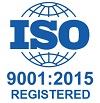With Effect From the Academic Year 2013-14
BIT 406
DISTRIBUTED SYSTEMS
(ELECTIVE –II)
Instruction per Week 4 Periods
Duration of University Examination 3 Hours
University Examination 75 Marks
Sessional 25 Marks
UNIT -I
Introduction: Definition of Distributed Systems, Goals: Connecting Users and Resources, Transparency, Openness, Scalability, Hardware Concepts: Multiprocessors, Homogeneous Multicomputer systems, Heterogeneous Multicomputer systems, Software Concepts: Distributed Operating Systems, Network Operating Systems, Middleware, The client-server model: Clients and Servers, Application Layering, Client-Server Architectures.
UNIT-II
Communication:Layered Protocols, Lower-Level Protocols, Transport Protocols, Higher-Level Protocols, Remote Procedure Call: Basic RPC Operation, Parameter Passing. Extended RPC Models, Remote Object Invocation: Distributed Objects, Binding a Client to an Object; Static verses Dynamic Remote Method Invocations, Parameter Passing, Message Oriented.
Communication: Persistence and synchronicity in Communication, Message-Oriented Transient Communication, Message-Oriented' Persistent Communication, Stream Oriented Communication: Support for Continuous Media, Streams and Quality of Service, Stream Synchronization.
UNIT-III
Process: Threads: Introduction to Threads, Threads in Distributed Systems, Clients: user Interfaces, Client-Side Software for Distribution Transparency, Servers: General Design Issues, Object Servers, Software Agents: Software Agents in Distributed Systems, Agent Technology, Naming: Naming Entities: Names, Identifiers, and Address, Name Resolution, The Implementation of a Name System, Locating Mobile Entities: Naming verses Locating Entities, Simple Solutions, Home-Based Approaches, Hierarchical Approaches.
UNIT-IV
Distributed Object based Systems: CORBA: Overview of CORBA, Communication, Processes, Naming, Synchronization, Caching and Replication, Fault Tolerance, Security, Distributed COM: Overview of DCOM, Communication, Processes, Naming, Synchronization, Replication, Fault Tolerance, Security, GLOBE: Overview of GLOBE, Communication, Process, Naming, Synchronization, Replication, Fault Tolerance, Security, Comparison of COREA, DCOM, and Globe: Philosophy. Communication. Processes. Naming. Synchronization. Caching and Replication, Fault Tolerance. Security.
UNIT-V
Distributed Multimedia Systems: Introduction. Characteristics of Multimedia Data. Quality of Service Management: Quality of Service negotiation. Admission Control. Resource Management: Resource Scheduling.
Suggested Reading:
- Andrew S. Tanenbaum and Van Steen "Distributed Systems" . PHI, 2nd Edition.
- Colouris G.. Dollimore Jean, Kindberg Tim, "Distributed Systems Concepts and Design". 3rd Edition Pearson education 2002.



